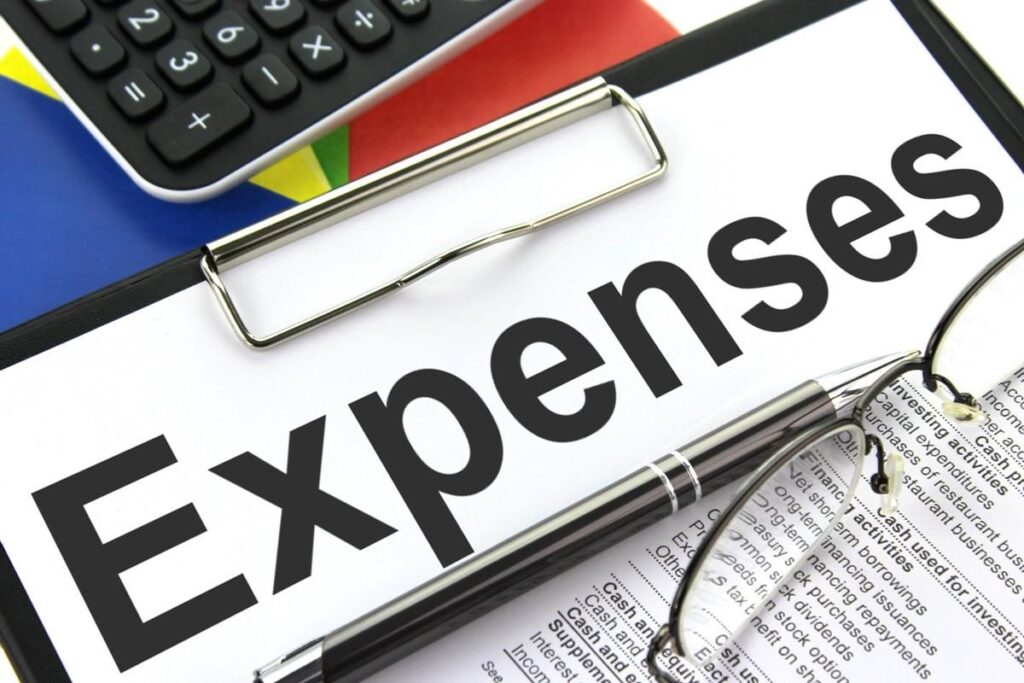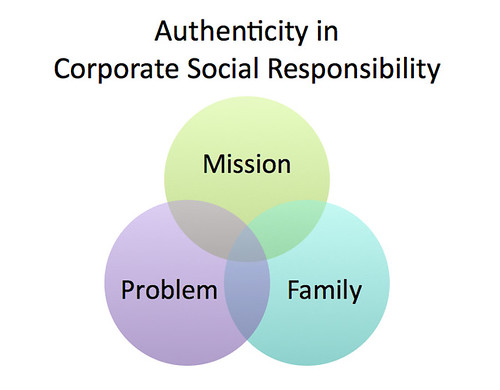The allure of transforming a side hustle into a full-time enterprise has captivated countless individuals. Whether it’s the thrill of launching handmade products, offering specialized freelance services, or meticulously crafting an online brand, the promise of independence, unparalleled flexibility, and the profound satisfaction of earning a living from your true passion is undeniably potent. Thousands annually contemplate the monumental step of leaving their conventional nine-to-five jobs to embark on this entrepreneurial adventure.
Yet, beneath the surface of this palpable excitement lies a complex landscape fraught with financial risks that many often underestimate. The transition from a supplementary income stream to one’s primary livelihood is less a simple step and more a delicate traverse through a financial minefield, demanding meticulous foresight and preparation. Without a robust strategy, the very dream of a sustainable business can quickly dissolve, leaving aspiring entrepreneurs vulnerable to cash flow crises and unforeseen setbacks.
This article serves as an essential guide, meticulously dissecting the most prevalent financial pitfalls that can derail even the most promising side hustles. Our aim is to illuminate these critical missteps, offering actionable insights and expert perspectives drawn from the experiences of countless entrepreneurs. By understanding and proactively addressing these dangers, you can fortify your venture, ensuring that your passion project evolves into a thriving, financially sound business capable of sustaining both your lifestyle and your ambitions.

1. **Underestimating Income Volatility**
One of the most profound shifts encountered when moving from traditional employment to full-time side hustle is the radical change in income stability. While a conventional salary arrives with comforting predictability each month, the entrepreneurial journey often introduces a volatile income stream, characterized by late payments, project delays, and pronounced seasonal peaks and troughs. This creates what many describe as a challenging “feast-or-famine cycle” that can be deeply unsettling for the unprepared.
The inherent danger here lies in a common psychological trap: treating prosperous periods as the new financial norm. Many new entrepreneurs might overspend during a particularly busy month, only to find themselves in severe financial distress when work inevitably slows down. This unpredictability, if not carefully managed, can morph from a minor inconvenience into a significant source of stress, undermining the very flexibility and independence that drew them to the side hustle in the first place.
The strategic solution involves building a substantial financial buffer, ideally accumulating several months’ worth of living and business expenses before making the full-time leap. Furthermore, adopting the discipline of paying yourself a fixed “salary” from your business account, regardless of monthly revenue fluctuations, is crucial. This practice, alongside rigorously separating business and personal finances, instills the discipline necessary to prevent overspending and ensures vital resources remain available to keep operations running smoothly.
Ultimately, passion alone, while a powerful motivator, cannot safeguard your financial well-being against an unpredictable income. It is the combination of careful planning, realistic expectations about the entrepreneurial journey, and stringent financial discipline that forms the bedrock of a truly sustainable and stress-free business venture. Embracing this reality is paramount before severing ties with the stability of traditional employment.
Read more about: Beyond the Hype: 10 Investing Missteps Beginners Regret Most — And How to Build Real Wealth Instead.

2. **Neglecting Comprehensive Budgeting**
A foundational pitfall that frequently ensnares side hustlers is the failure to establish and diligently maintain a comprehensive budget. Many entrepreneurs mistakenly assume that their supplementary income will seamlessly integrate with their existing finances, effortlessly augmenting their primary salary. However, without a meticulously crafted budget, funds can be easily mismanaged, leading to inadvertent overspending and a skewed perception of actual profitability.
To circumvent this, it is imperative to create a budget that encompasses all facets of your financial life – both personal and business-related. This involves rigorously tracking every source of income and meticulously documenting all expenses. Crucially, many side hustlers initially overlook the accumulating costs associated with their venture, such as materials, necessary software subscriptions, marketing expenditures, and even professional services like accounting or legal advice. These seemingly minor costs, left untracked, can significantly erode profits over time.
Leveraging modern budgeting tools, whether they be spreadsheets, intuitive budgeting applications, or robust accounting software, can be a game-changer. A well-structured budget not only provides a clear, real-time snapshot of your financial health but also empowers you to forecast cash flow more accurately. This foresight is invaluable, enabling you to proactively prepare for anticipated fluctuations in income and ensuring sufficient savings are in place to navigate leaner months without undue stress.
In essence, neglecting to budget is akin to navigating a complex financial landscape without a map. A comprehensive budget acts as your indispensable financial compass, guiding every decision and ensuring that your side hustle income genuinely contributes to your overall financial goals, rather than merely disappearing into an opaque stream of expenses.
Read more about: Mastering Your Ride: A Comprehensive Guide to Selecting the Perfect Wheel and Tire Combination for Optimal Performance and Safety

3. **Underestimating True Business Expenses**
While side hustles often begin with minimal overhead—perhaps just a laptop, an internet connection, and some dedicated evening hours—the financial landscape dramatically shifts once the venture scales or transitions to a full-time commitment. A common and costly error for nascent entrepreneurs is significantly underestimating the true, comprehensive cost of operating a legitimate business. What once felt manageable in a supplementary capacity can quickly burgeon into a substantial financial burden.
Beyond the obvious, a host of “hidden costs” invariably surface. These include, but are not limited to, essential business insurance premiums, recurring software subscriptions vital for operational efficiency, and the increasingly indispensable marketing spend required to reach and engage a wider audience. Furthermore, equipment often needs upgrading or replacing, travel costs for client meetings or industry events can creep in, and the sheer length of the expense list can become daunting unexpectedly.
A particularly insidious aspect is the impact of taxes, which take a significantly larger bite out of earnings once a side hustle becomes the primary income source. This frequently leads to the dangerous assumption that gross revenue directly equates to profit. Without a detailed breakdown and rigorous tracking of every expenditure, entrepreneurs are at a high risk of vastly overestimating their actual take-home income, leading to a distorted view of their financial health and profitability.
The antidote to this pitfall is the proactive development of a clear, meticulously detailed budget that accounts for *both* business and personal expenses. It is insufficient to merely cover operational costs; entrepreneurs must also ensure their personal financial well-being is not compromised. Adopting a mindset where every incoming pound is already earmarked—whether for bills, strategic investments, or essential savings—is a straightforward yet profoundly effective strategy for maintaining financial equilibrium and fostering sustainable growth.
Read more about: Beyond the Hype: 10 Investing Missteps Beginners Regret Most — And How to Build Real Wealth Instead.

4. **Ignoring Proper Business Structure**
Many side hustlers, driven by passion and immediate gratification, frequently overlook the critical legal and structural aspects of establishing their venture. Starting informally as a sole proprietor is a common entry point, but this default choice can carry significant and often unforeseen financial and legal ramifications down the road. The decision of how your business is legally structured is far from a mere administrative formality; it is a fundamental financial planning component.
The choice of business structure—whether to remain a sole proprietorship, incorporate as a Limited Liability Company (LLC), or even a corporation—exerts a profound influence on your tax obligations, personal liability, and overall financial security. For instance, an LLC provides a crucial layer of personal liability protection, safeguarding your personal assets from potential business debts or legal challenges. Without this separation, a business setback could directly imperil your home, savings, and other personal holdings.
Consequently, consulting with seasoned legal experts or qualified tax advisors is not merely advisable but essential. These professionals can provide tailored guidance, helping you select the optimal business structure aligned with your specific business model, financial objectives, and anticipated growth trajectory. Their expertise can illuminate the nuances of liability protection, compliance requirements, and the most advantageous tax treatments available for your particular situation.
Investing in professional advice at this early stage often proves to be an exceptionally cost-effective decision. The right structural choice can significantly reduce future tax burdens, prevent costly legal entanglements, and proactively protect personal assets. This foundational step is instrumental in laying a robust groundwork for sustainable growth, transforming an informal side gig into a resilient and legally sound enterprise.
Read more about: Vehicle Emissions Testing: A Comprehensive Consumer Guide to Understanding and Navigating Smog Checks

5. **Overlooking Essential Insurance Coverage**
Another frequently neglected aspect of financial planning for side hustlers, which carries potentially devastating consequences, is the oversight of adequate business insurance. A pervasive and dangerous mindset among budding entrepreneurs is the belief that because their side venture is small or perceived as low-risk, it does not warrant comprehensive coverage. This assumption can leave them critically exposed to unforeseen events that could otherwise be mitigated.
It is imperative to thoroughly evaluate the specific types of insurance that are requisite for your particular line of work and industry. For instance, general liability insurance is an indispensable safeguard, providing crucial protection against claims arising from unexpected accidents that could lead to costly lawsuits—such as a client injuring themselves on your property. For service-based businesses, professional liability insurance becomes essential, shielding against claims of negligence, errors, or omissions in the services provided.
Beyond these general categories, a deep understanding of the unique risks inherent to your industry is paramount. A digital business, for example, might face risks related to data breaches, while a product-based business might require product liability insurance. Failure to secure the appropriate insurance coverage can lead to catastrophic financial devastation if an unexpected situation materializes, potentially erasing years of hard work and accumulated profits.
Therefore, viewing insurance not as an optional expense but as a fundamental component of your financial safety net is critical. Proper coverage provides invaluable peace of mind, allowing you to focus on growing your business with the assurance that you are protected against the myriad of unpredictable challenges that can arise in the entrepreneurial landscape.
Read more about: Behind the Impasse: 12 Core Budget and Contract Challenges That Strain Film Production Partnerships

6. **Failing to Separate Personal and Business Finances**
For many side hustlers, the journey often commences with the convenience of utilizing personal banking accounts for business transactions. While this decision may initially appear innocuous, it rapidly evolves into a source of considerable financial chaos and operational inefficiency down the road. The blurred lines between personal and business finances create a tangled web that complicates everything from tracking profitability to preparing for tax season.
Establishing a distinct business bank account is not merely a recommendation; it is a fundamental imperative for several compelling reasons. A separate account profoundly simplifies the arduous process of tracking all income streams and expenses directly related to your side hustle. This clear delineation streamlines bookkeeping, making the annual tax filing process significantly less burdensome and reducing the likelihood of errors or omissions that could trigger an audit.
Beyond simplifying tax compliance, maintaining separate accounts provides a clear and professional boundary between your personal wealth and your business’s financial health. This distinction is crucial for accurately assessing the true performance of your venture and making informed strategic decisions. Furthermore, it allows for more disciplined financial management, preventing the inadvertent draining of business resources for personal expenditures, which can critically impair your venture’s ability to operate and grow.
Coupled with a separate account, the diligent practice of keeping meticulous records of all transactions, ideally using accounting software, is invaluable. Such detailed documentation not only aids in monitoring business performance but also serves as an indispensable resource during any audits or when liaising with tax authorities. This financial discipline is a cornerstone of sustainable entrepreneurial success.
Read more about: Beyond the Battery: 12 Smart Ways to Slash Your Car’s Emissions (No EV Needed!)

7. **Underestimating Tax Burdens and Quarterly Payments**
Among the array of financial pitfalls confronting new entrepreneurs, tax obligations stand out as one of the most intimidating and frequently underestimated. Many individuals embarking on a side hustle initially operate informally, earning “extra” income without fully comprehending the tax implications. However, once the side hustle matures into a primary source of income, strict tax compliance becomes an absolute non-negotiable requirement.
Unlike traditional employment, where taxes are automatically deducted from each paycheck, self-employment places the full responsibility for tax calculation and payment directly on the entrepreneur. This fundamental difference often catches side hustlers off-guard, leading to potentially nasty surprises during tax season. Failing to register properly with relevant tax authorities, missing crucial filing deadlines, or overlooking legitimate deductions can result in substantial penalties that rapidly erode hard-earned profits.
It is imperative to conduct thorough research into local, state, and federal tax requirements pertinent to your specific side hustle. Depending on your income level and chosen business structure, you will likely be required to pay estimated quarterly taxes, rather than a single annual payment. This proactive approach prevents a massive, unexpected tax bill at year-end, which can plunge an unprepared business owner into financial distress.
To effectively navigate this complex terrain, setting aside a dedicated portion of each income stream specifically for tax obligations is a critical strategy. This “tax fund,” recommended by many experts to be around 20-25% of gross income, ensures that the necessary funds are always available when taxes are due. Seeking professional advice from a local accountant can also prove invaluable, not only for ensuring compliance but also for optimizing your financial setup and identifying all allowable deductions, ultimately saving you money and stress in the long run.

8. **Setting Unrealistic Goals**
Passion, while an indispensable catalyst for any entrepreneurial venture, can sometimes blur the lines between ambition and practicality. New entrepreneurs, fueled by intense enthusiasm and the initial thrill of their side hustle, frequently set financial targets and growth projections that are, frankly, unrealistic. This potent mix of high energy and ambitious goals can often lead to a disconnect with the stark realities of market dynamics and business development.
The inherent danger in such unchecked optimism is that unmet expectations can quickly pave the way for disappointment, demoralization, and ultimately, burnout. When projected milestones are consistently missed, the vibrant passion that initially propelled the venture can wane, leading to a loss of motivation and, in severe cases, outright business failure. This psychological toll can be as damaging as any financial setback, undermining the very foundation of the entrepreneurial spirit.
To circumvent this pervasive pitfall, the strategic adoption of the SMART goal framework is not merely a suggestion but a critical directive. By ensuring objectives are Specific, Measurable, Achievable, Relevant, and Time-bound, entrepreneurs can construct a robust and realistic roadmap. This disciplined approach fosters the setting of achievable financial milestones, allowing for tangible progress measurement and sustaining high levels of motivation through incremental successes, rather than grand, elusive visions.
Furthermore, it is crucial to cultivate a mindset of flexibility and adaptability. Initial projections, no matter how meticulously crafted, might not always materialize precisely as planned. The business landscape is inherently dynamic, demanding an agile approach. The willingness to revise strategies and adjust financial goals in response to real-world performance is paramount for maintaining a sustainable path toward long-term success, ensuring the venture remains resilient against unforeseen challenges.
Read more about: Unpacking the Promise vs. Reality: 12 Weight Loss Apps & Why Users Are Calling Them ‘Gimmicks’

9. **Insufficient Market Research and Planning**
Many side hustlers, eager to launch their innovative ideas, frequently bypass the critical preliminary stages of comprehensive market research and strategic planning. Embarking on this entrepreneurial journey without a thorough understanding of the market or a well-defined roadmap is akin to navigating an unfamiliar terrain without a compass. This oversight is a prevalent and costly error that can jeopardize the viability of even the most promising ventures from their inception.
This lack of foundational research often manifests in several critical shortcomings, including inefficient marketing efforts where resources are spread too thin across a broad audience. It also leads to misaligned product or service offerings that fail to resonate with actual customer needs, and consequently, limited customer engagement and uptake. The context notes an illustrative example of an individual starting an e-commerce venture without thoroughly researching market demands, competition, and logistical considerations, which can quickly lead to being overwhelmed and struggling to allocate resources effectively.
To build a truly sustainable enterprise, it is imperative to conduct exhaustive research into the competition, meticulously analyze the target markets, and identify distinct value propositions. Entrepreneurs must ask: What can be done differently? How can more or different value be added from others? This investigative phase allows for the development of a unique selling proposition and ensures that the business is poised to meet genuine market demand, thereby avoiding the costly trial-and-error approach that often characterizes unprepared ventures.
Crucially, defining a clear target audience—understanding their specific demographics, preferences, and needs—is non-negotiable. This precise identification allows entrepreneurs to tailor their strategies, ensuring that precious time and financial resources are invested where they will yield the maximum impact. Such focused efforts foster sustained growth and customer satisfaction, transforming a general idea into a highly targeted and effective business model, guided by a well-thought-out plan that serves as an indispensable compass.
Read more about: Beyond the Gridiron: Why a New Wave of College Athletes is Powering Up for High-Paying Esports Careers and Redefining Success

10. **Over-investing Too Much Money Upfront**
The initial enthusiasm of a side hustle can often lead to a dangerous inclination: over-investing significant capital upfront before the business model has been thoroughly validated. While there will inevitably be some initial costs associated with launching any venture, the worst strategic move an aspiring entrepreneur can make is to exhaust all personal savings or incur substantial debt to fund a side business that remains unproven in the market. This premature and excessive financial commitment carries considerable risk.
The danger is particularly acute for those without prior entrepreneurial experience, who are essentially learning the ropes as they go. Without a clear understanding of the market demand or the inherent profitability of their concept, such significant upfront investment becomes a gamble. The context explicitly warns against this, stating, “The worst move you can make is to put all your savings or borrow money to invest all in a side business, that then proves to not be profitable or have as much demand as you originally thought.”
A more prudent approach involves a phased investment strategy, prioritizing essential expenditures and scaling up capital allocation only as the business demonstrates traction and profitability. This minimizes financial exposure during the experimental stages. It is completely fine and normal to have some upfront costs, but if you do not have prior experience and are learning as you go, avoiding spending too much money on your side hustle in the beginning is paramount.
Ultimately, the goal is to build a financially resilient side hustle, not to sink a substantial portion of your personal wealth into an unproven idea. This requires a disciplined approach to capital expenditure, ensuring that investments are made strategically and incrementally, aligning with verifiable market demand and clear pathways to revenue generation, thereby protecting personal finances from unnecessary risk.
Read more about: Avoid These 12 Critical Mistakes When Investing in Early-Stage Startups: An Insider’s Guide

11. **Mimicking Others Without Authenticity**
In a landscape saturated with success stories and social media gurus, the temptation to blindly mimic the strategies and business models of others is a potent trap for many side hustlers. While drawing inspiration from successful entrepreneurs is natural, directly replicating another person’s path without considering personal fit or market nuances is a significant pitfall. The context cautions, “While there are some legit people advertising, even then it doesn’t mean following their path will work for you.”
The fundamental flaw in this approach lies in the assumption that a proven formula for one individual will automatically translate to success for another. Every side hustle is deeply personal, influenced by the entrepreneur’s unique skills, passions, market access, and individual circumstances. What might be a thriving venture for someone else could quickly become a source of frustration and struggle if it doesn’t genuinely align with your own inclinations.
For a side hustle to genuinely flourish, it is imperative to select an endeavor that genuinely excites you and maintains your intrinsic interest. Ideally, it should be something you already possess skills in or genuinely enjoy doing. This authentic connection to the work is not merely a preference; it is a critical driver of sustained effort, resilience in the face of challenges, and overall job satisfaction, turning what could be a chore into a fulfilling pursuit.
If you instead pick something solely because another person was successful in making money, you will likely lack the necessary passion and intrinsic motivation to follow through effectively. The absence of this personal connection to the work can lead to half-hearted efforts, inconsistent quality, and eventual abandonment, demonstrating that genuine engagement, not just perceived profitability, is the bedrock of long-term side hustle success.
Read more about: Behind the Mic: 8 Major Stars Who Steered Clear of Iconic Charity Singles (and Why!)

12. **Inefficient Task Management and Prioritization**
Juggling a side hustle alongside existing responsibilities inherently demands exceptional organizational skills and a keen ability to prioritize. A common yet detrimental mistake for many aspiring entrepreneurs is to approach their side projects without a structured plan, randomly picking tasks to complete each day. This haphazard method, while seemingly productive in the moment, invariably leads to significant inefficiencies and diluted impact.
This lack of systematic organization means that time and effort are often expended on tasks that, while present on a to-do list, do not genuinely contribute to the venture’s growth or maximize its return on investment (ROI). As the context highlights, “With most side hustles, there will be small tasks that really are not that important. There are many tasks to your business, but they take time and actually are not contributing to your growth.” Entrepreneurs may not even realize how much time they are inadvertently wasting.
To combat this, a highly organized approach is essential. This involves meticulously identifying and prioritizing tasks that will truly “move the needle” for the business, ensuring that limited time and energy are channeled into activities with the highest potential impact. Whether it’s strategic marketing efforts, product development, or client acquisition, clarity on high-value tasks is paramount for optimal resource allocation.
Beyond daily organization, implementing broader strategies such as setting realistic goals, establishing clear boundaries around working hours, and creating structured workflows are crucial. Such practices optimize time, prevent burnout, and enhance overall productivity. They transform a scattered effort into a focused, progressive journey, ensuring that every hour dedicated to the side hustle yields maximum benefit and propels the business forward effectively.
Read more about: The 12 Strategic Time-Wasting Activities That Top CEOs Religiously Avoid for Peak Performance and Growth

13. **Overextension and Burnout**
The fervent ambition that often accompanies a side hustle can, ironically, become its undoing through overextension and subsequent burnout. It is remarkably easy for entrepreneurs to get swept up in the pursuit of growth, leading them to take on an excessive workload, especially when balancing their side venture with a primary job. This relentless push for more, without adequate breaks or self-care, can critically impair both personal well-being and business efficacy.
The consequences of overextension are multifaceted and severe. Juggling multiple projects or an unmanageable number of clients frequently results in diminishing returns, where the quality of work suffers and productivity plateaus. More critically, it leads to significant stress and burnout, diminishing the very joy that initially attracted the individual to their passion project. The “side hustle culture” often pushes a narrative of constant grind, yet the context wisely reminds us, “You are allowed to give yourself breaks, you don’t need to work an extra 40+ hours a week on your side hustle.”
A fundamental aspect of sustainable entrepreneurial success is the ability to recognize and respect personal limits. It is imperative to honestly assess how many hours per week can be realistically dedicated to the side hustle without compromising one’s primary job, personal relationships, or overall well-being. Prioritizing rest is not a luxury but a necessity, as important as the hustle itself, to maintain creativity, energy, and mental clarity.
Ultimately, entrepreneurs must strategically prioritize their projects, identifying those with the highest potential for growth or return on investment. Focusing energy on initiatives that yield the best outcomes not only enhances financial results but also preserves the entrepreneur’s mental and physical health. This balanced approach ensures that the side hustle remains a source of fulfillment and profit, rather than an exhausting burden.
Read more about: Did You Know? The Mental Moves & Surprising Hobbies Keeping Ryan Reynolds Grounded and Genius

14. **Unwillingness to Adapt and Learn**
The contemporary business landscape is characterized by its incessant dynamism, yet many side hustlers fall into the hazardous trap of adhering rigidly to their initial vision, even when market conditions or personal realities demand a shift. This unwillingness to adapt is a critical oversight that can stifle growth, render offerings obsolete, and ultimately lead to business stagnation or failure. The notion of “sticking with what they originally envisaged, despite market changes” is a recipe for being left behind.
In a rapidly evolving environment, failing to continuously invest in knowledge and skills severely limits growth potential. Allocating a budget for professional development—whether through online courses, mentorship, or industry conferences—is an investment that pays significant dividends. This commitment to ongoing education, as the context suggests, can result in “increased income opportunities and higher profitability,” equipping the entrepreneur to pivot their business strategy effectively when necessary.
Therefore, maintaining an open and adaptable mindset is paramount. Entrepreneurs must be willing to critically re-evaluate their offerings, marketing strategies, and financial projections, and be prepared to pivot their business model in response to market demand or shifts in personal circumstances. This iterative approach ensures the business remains relevant and competitive, constantly evolving to meet new challenges and opportunities.
Furthermore, actively soliciting feedback from customers and peers provides invaluable insights into areas for improvement or potential growth avenues. Regularly reading industry publications and engaging in relevant social media communities helps stay informed about trends. This continuous learning and responsive adjustment are not merely beneficial; they are essential for informed financial planning decisions and for transforming a static venture into a resilient, forward-moving enterprise.
Read more about: Navigating the New Wave of IRS Refund Fraud Scams: A Consumer’s Guide to Protection

15. **Neglecting Long-term Financial Planning**
In the initial, often chaotic stages of a side hustle, the immediate focus is almost exclusively on survival and generating enough revenue to stay afloat. This intense short-term orientation, while understandable, frequently leads to a significant oversight: the neglect of long-term financial planning. Many new business owners inadvertently overlook crucial elements like retirement savings, comprehensive insurance coverage, and strategic reinvestment, all of which are absolutely vital for sustainable personal and business security.
It’s tempting to view a side hustle as a day-to-day project, distinct from the long-term financial commitments associated with traditional employment. However, if the aspiration is for the venture to support one’s lifestyle for years to come, a fundamental shift in mindset is required—from that of a freelancer to that of a strategic business owner. This includes proactively exploring retirement options such as a SEP IRA or a Solo 401(k), which often offer higher contribution limits than traditional IRAs. Consistent contributions, even small ones, can yield significant long-term benefits through compound interest.
Moreover, adequate insurance coverage, extending beyond just general and professional liability, forms a critical component of this long-term safety net. The context highlights the importance of protecting oneself with the right insurance, which could include health, life, or disability coverage, to safeguard against unexpected personal costs that could derail financial progress. Viewing insurance not as an optional expense but as a foundational investment in peace of mind is paramount.
Ultimately, while short-term survival is undoubtedly important, it is meticulous long-term planning that truly transforms a promising side hustle into a sustainable, thriving venture capable of securing one’s future. By consciously allocating funds for retirement, securing appropriate insurance, and strategically reinvesting in the business’s growth, entrepreneurs can build a robust foundation that supports both their immediate ambitions and their enduring financial well-being.
Read more about: Understanding Car Modifications: A Consumer’s Guide to Insurance, Resale Value, and Hidden Costs
Navigating the dynamic landscape of side hustles demands more than just passion and a brilliant idea; it requires rigorous financial discipline, strategic foresight, and an unwavering commitment to continuous learning and adaptation. By diligently sidestepping these fifteen pervasive financial pitfalls—from underestimating income volatility to neglecting long-term planning—aspiring entrepreneurs can dramatically enhance their prospects for success. Embracing a professional, analytical approach to every facet of your side hustle, from budgeting and business structure to market research and personal well-being, is not just advisable; it’s the bedrock upon which genuine financial independence and a thriving, sustainable business are built. The journey from a promising concept to a profitable reality is challenging, but with astute planning and a proactive mindset, your side hustle can indeed become a powerful engine for achieving your deepest ambitions and securing your financial future.



